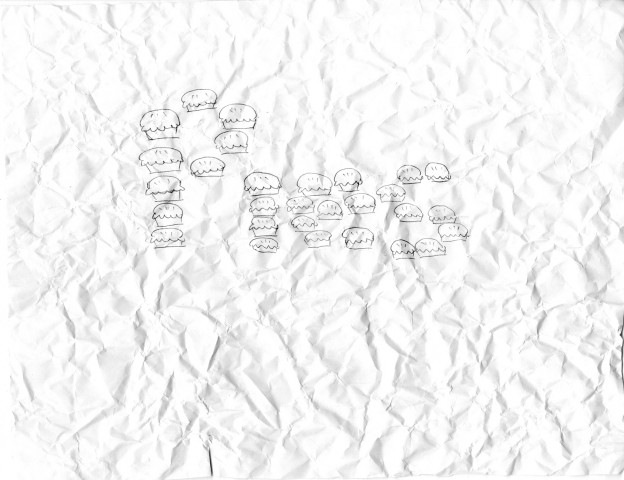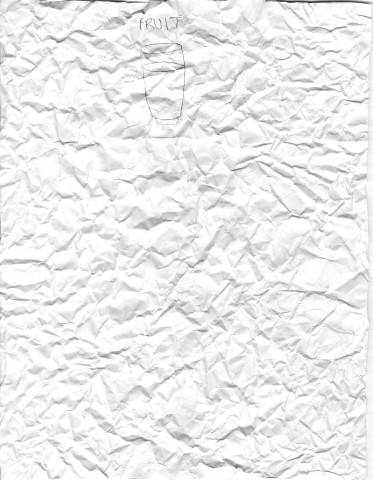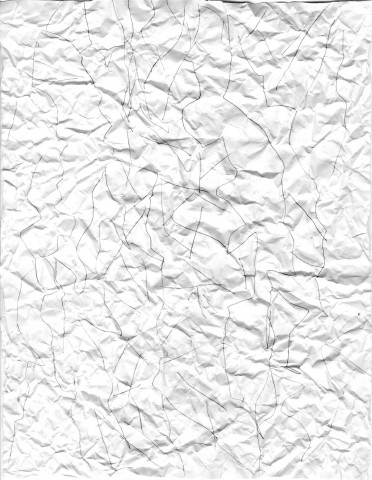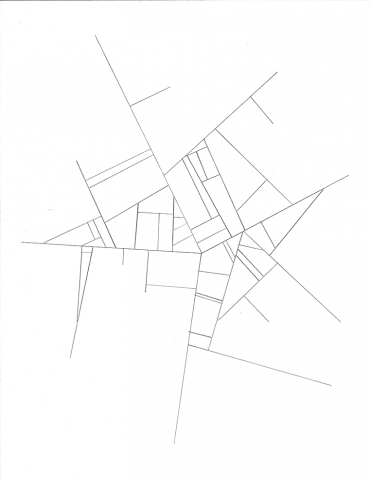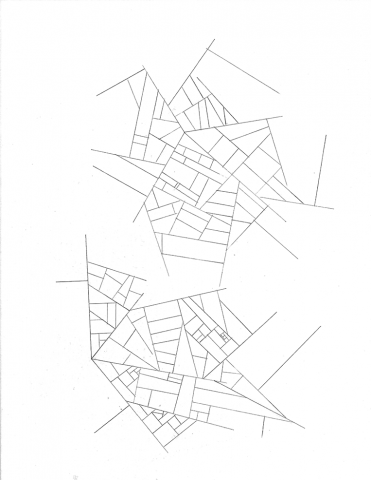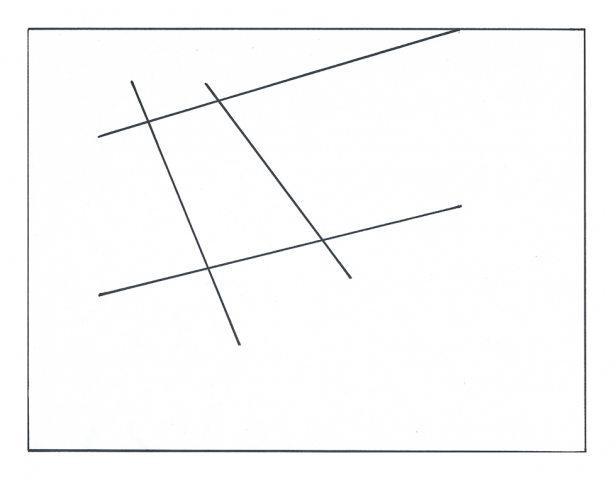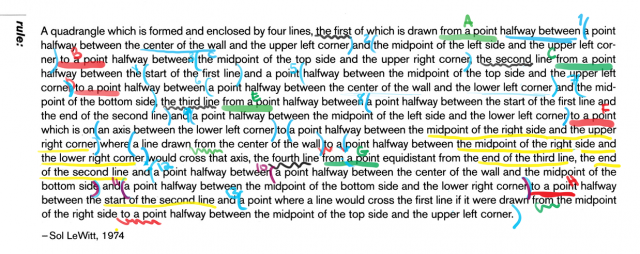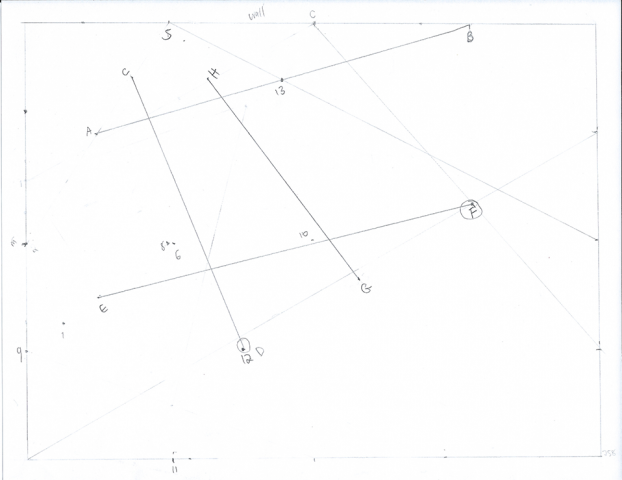beating a dead horse
- Talk to the person next to you about anything for 30 seconds. If you can’t find a person, talk to yourself for 30 seconds. The topic can be about anything.
- Think of one word to describe what you just talked about.
- On paper, draw the word with the word.
- Crumple up the paper.
- Throw it out a window.
- Retrieve the paper. If you are physically unable to retrieve the paper, let it be.
- Once you’ve retrieved the paper, open it up.
- Trace the wrinkles on the back of the paper.
- Once you’re done, crumple it up again and throw it in someone’s face.
- Apologize to the person and retrieve the paper.
(the following images are grouped by their front & back)
———-
———–
For this assignment, even though it wasn’t a relevant reading, I found this quote from Art and the API particularly inspiring: “The specific function of modern didactic art has been to show that art does not reside in material entities, but in relations between people and between people and the components of their environment.” I was interested in “instructing” the person what beating a dead horse by repeatedly talking about the same subject would look like. I know I have a tendency to do this a lot, so I thought I would physically manifest this process.
The most hilarious aspect of this was the trouble people had with finding windows, let alone open ones. You’d be surprised at how many closed windows (including insect screen) as opposed to open windows there are around this area–so I expected people to find unorthodox windows. The definition of windows, after all, includes “a thing resembling a window in form or function, in particular.” One person threw the paper out a door, and another person tried to open a window, was confronted with an insect screen, gave up on that step, and moved on. I was also surprised at what people did with the crumpled paper at the end–two chose not to unfurl it because it wasn’t in the instructions, and one unfurled it by accident (her friend unraveled it).
Mostly, I was interested in how people would interpret “3) On paper, draw the word with the word.” One actually said out loud, “How can I draw this with a pie? I don’t have a pie with me!” which surprised me because it was a miscalculation on my part. I had no idea people would attempt to draw the word with the object the word referred to. But as expected, interpretations varied; the word “pie” was written with many many pies, the word “rubbish” (misspelled as “rubish”) was written with “rubish” all over, and the word “fruit” wasn’t even drawn as a fruit–it was a cup of orange juice, according to the person who drew it. So I think I got this part right for showing interesting variations and thought logic people have when presented with a vague statement like “draw the word with the word.”
I would definitely tinker with using an actual pen (probably a marker) instead of a measly pencil. You could barely see the traced wrinkles on the back. I would also introduce more aspects of repetition; in retrospect, the point of the project wasn’t emphasized well. Repetitions could include talking to multiple people to fill the paper up with more drawn words, or just draw more word associations from that single topic. After all, the resulting drawing itself wasn’t very interesting–it was just the process that was interesting.
